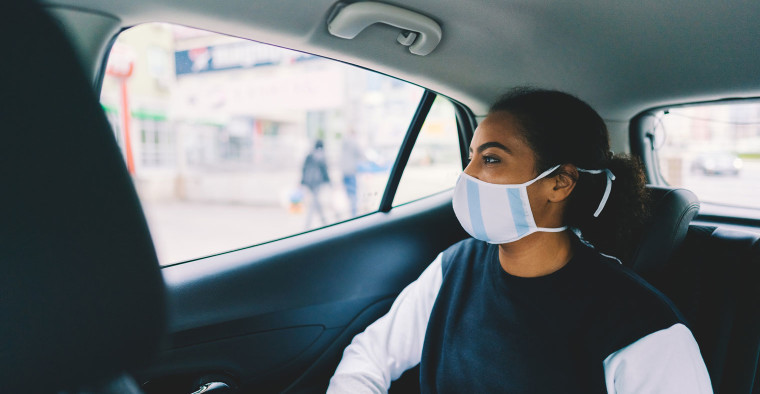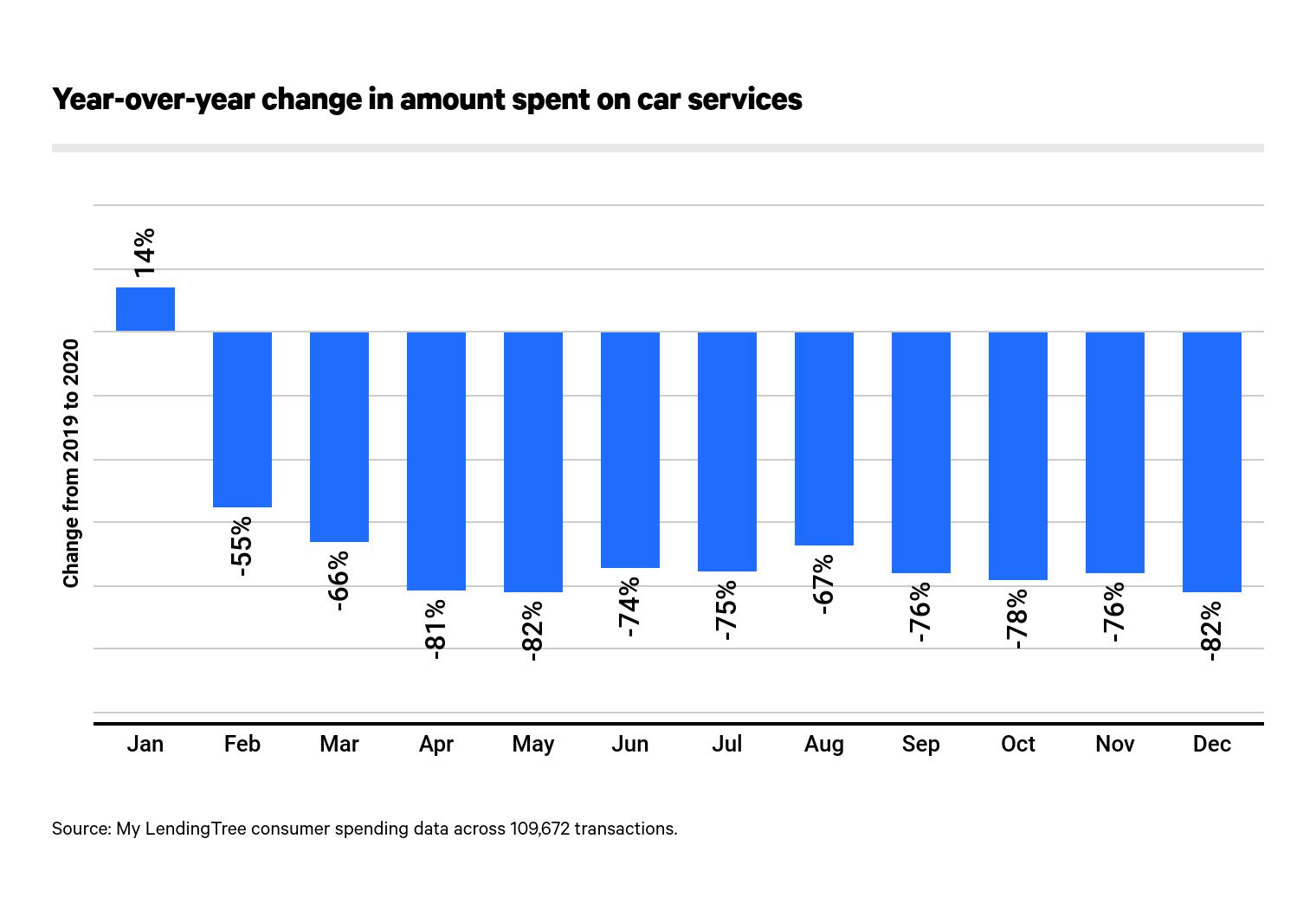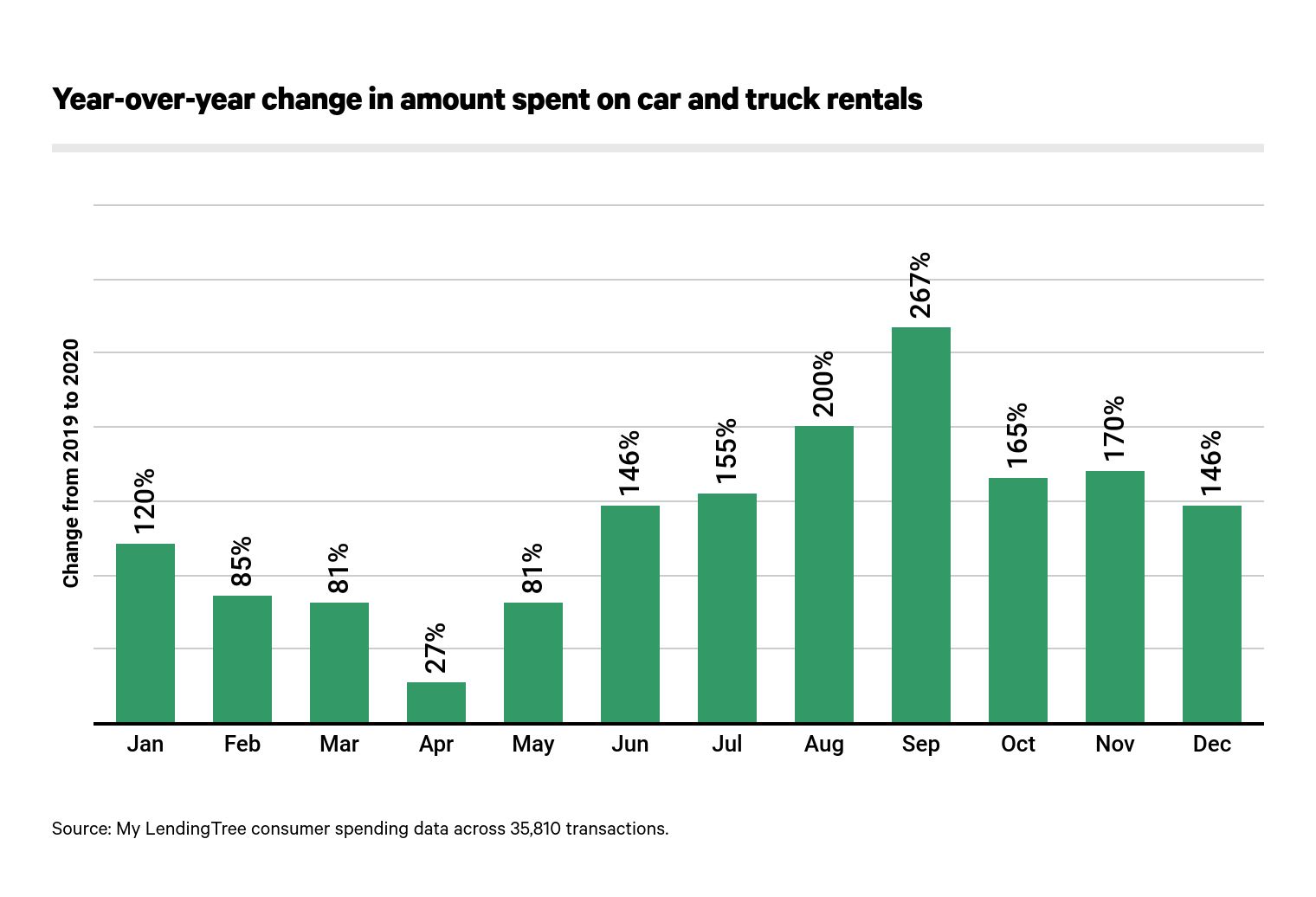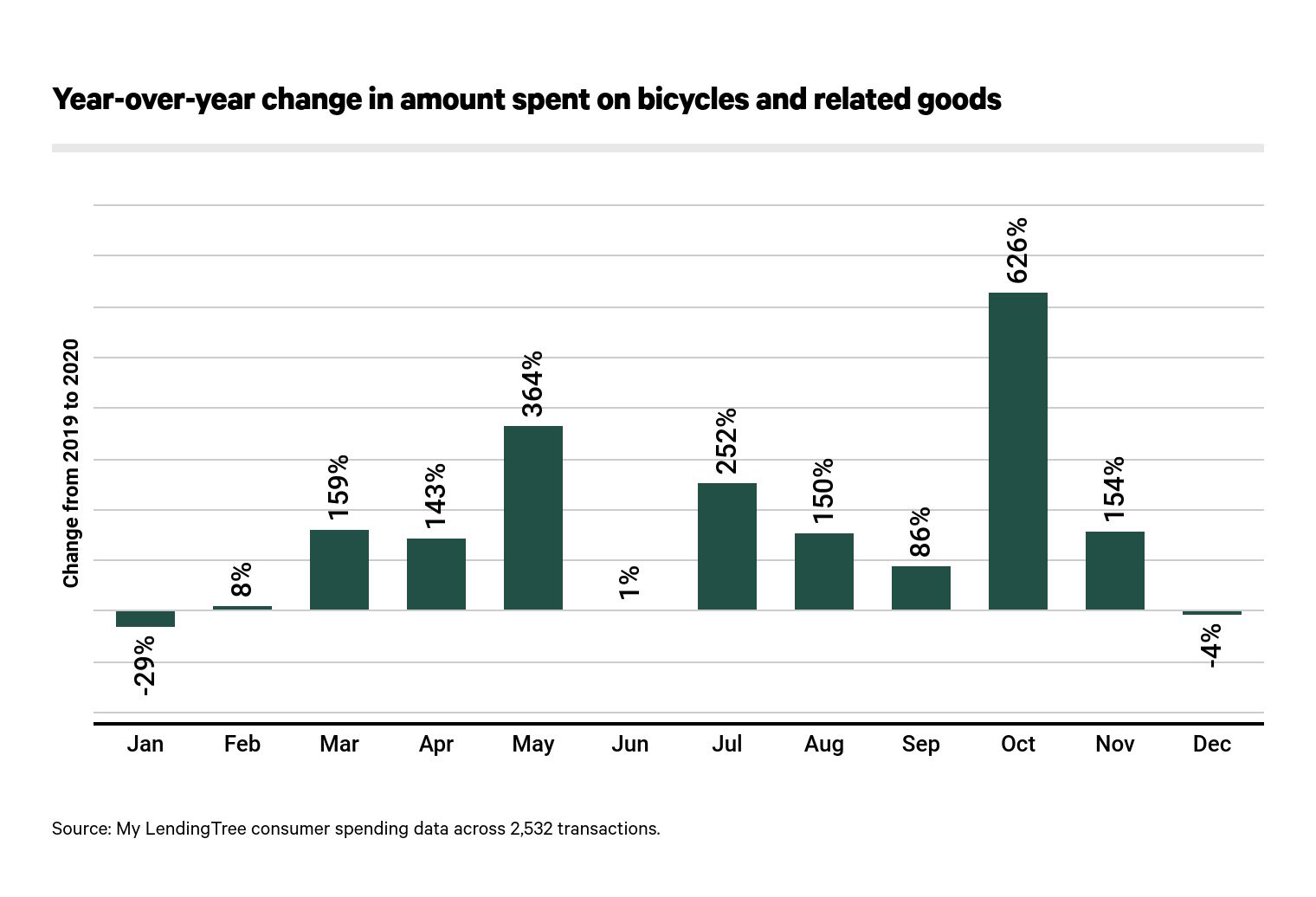Auto Insurance
Consumers Spent 69% Less on Car Services in 2020 Than Year Before

The ongoing coronavirus pandemic has disrupted the driving and commuting schedules of many Americans. ValuePenguin used the LendingTree financial services platform to analyze the spending habits of Americans, finding that consumer spending on car services — which includes ride-hailing — dropped 69% in 2020 compared to 2019.
Consumers sought other, more personal ways to get around. In fact, consumers spent 143% more on car and truck rentals in 2020 than in 2019, reaching a high point in September.
Meanwhile, the bicycle industry saw a 120% boost compared to the previous year, according to more than 2,500 transactions. Here’s what else we learned.
Key findings
- In 2020, consumers spent 69% less on car services than the year before. The largest year-over-year drops occurred in May and December, when expenses fell by 82%.
- People spent far more on car and truck rentals in 2020 than in 2019, with expenses rising by 143%. The largest year-over-year increase came in September, when the amount spent on these services rose by 267%.
- Consumers on average spent 120% more on bicycles in 2020 than in 2019. In October, shoppers spent 626% more on bikes than they did that month the year before.
Data from nearly 110,000 transactions shows consumers spent far less money on car services in 2020 than in 2019
Using the consumer data on LendingTree, ValuePenguin found there was a 69% reduction in money spent on car services from 2019 to 2020.
Spending on car services in December 2020 was nearly $51,100, or 69%, lower than in January 2019.
Expenses — based on nearly 110,000 transactions — dropped by an average of 66% a month through 2020 compared to the year before. The largest drops occurred in May and December (82% year over year), but December saw the largest spending decrease in dollars at $109,100 year over year.
The pandemic has had a palpable impact on the amount Americans spend on car services. As Americans drove less and stayed inside more during much of 2020, the use of car services like ride-hailing dropped. In 2019, our sample of LendingTree users spent an average of $106,500 a month on car services, or nearly $1.3 million total. During 2020, the average plummeted to $32,600 a month, or more than $391,000 total.

Indeed, in April and May — the months directly following the initial surge in U.S. COVID-19 cases — there were only 1,546 total car service transactions among our sample. From January 2019 through December 2020, there were 4,570 car services transactions a month on average.
Money spent on car and truck rentals increased 143% from 2019 to 2020
While the amount consumers spent on car services fell in 2020 compared to 2019, there was a rise of 143% in spending on car and truck rentals during the same period.
The amount spent on car and truck rentals went up by $2.5 million in 2020 compared to 2019.
In 2020, shoppers within our sample spent more than $4.2 million on rental vehicles, compared with $1.7 million during 2019. On average, there was a 137% change in the amount spent per month compared to the previous year.
The effects of the pandemic are observable in the price data for car and truck rentals, too. From May 2020 to September 2020, the year-over-year change in the amount spent on these services increased monthly between 81% and 267%. Moreover, in the months following, there wasn't a precipitous decline in rentals. From October to December, there was an average year-over-year increase of 161% a month.

An average of $145,200 monthly — across more than 12,000 transactions — was spent on car and truck rentals in 2019. In 2020, consumers spent an average of $353,500 a month on rentals across nearly 24,000 transactions. In September, there was a 124% increase in the number of transactions compared to the year prior — the largest increase at any point amid the pandemic.
Consumers spent 120% more year over year on bicycles and related goods in 2020 than they did in the previous year
We also analyzed 2019 and 2020 data related to bicycle purchases. Across a total of more than 2,500 transactions during this period, $259,700 was spent on bicycles. Expenditures in 2020 totaled $178,600, or 69% of the total of both years.
In 2020, there was an average per-month increase of 159% in the amount spent on bicycles compared to the year before. The largest change occurred in October, when there was a 626% boost in bicycle purchases over that month in the previous year. Next up were May (364%) and July (252%). In fact, there were only five months when the amount spent on bicycles increased by less than 100%, including two months when it dropped (January and December). December saw the only year-over-year drop amid the pandemic (4%).
In 2020, consumers spent an average of $14,900 on bicycles per month, up from $6,800.

Do you need bicycle insurance?
Your homeowners or renters insurance provides some coverage for your bicycle, but it could be a good idea to increase your protection or purchase a separate insurance policy altogether depending on the value of your bike. A standard homeowners or renters insurance policy limits reimbursements on bicycle claims. If your bike would cost more than $1,500 to $2,000 to replace, consider adding coverage with an endorsement or floater.
Additionally, a regular homeowners insurance policy may not cover theft or non-riding sources of damage. You may be able to purchase a bicycle-specific endorsement that adds theft protection and coverage for non-riding damage. But for full protection, it might be best to purchase a separate bicycle insurance policy from a specialty insurer.
Methodology
Using the transactions of anonymized LendingTree users who use the app’s new feature to connect bank accounts, review spending and track spending in real time, ValuePenguin calculated the expenses that went toward car services, including ride-hailing, in addition to car and truck rentals, and bicycles. We looked at how the money spent on these products changed between 2019 and 2020.
Readers should note that users of the feature tend to skew younger, have lower incomes and have lower credit scores than the national distribution. Both lower incomes and lower credit scores are more common in younger adults.
